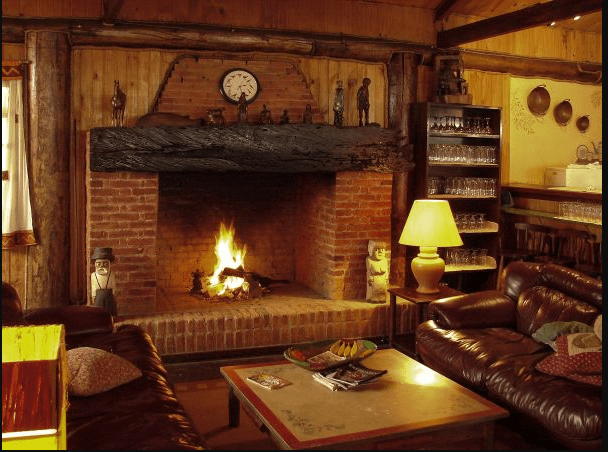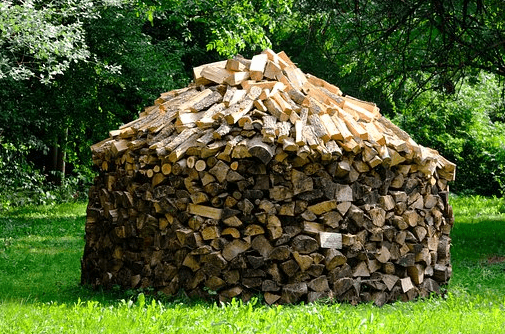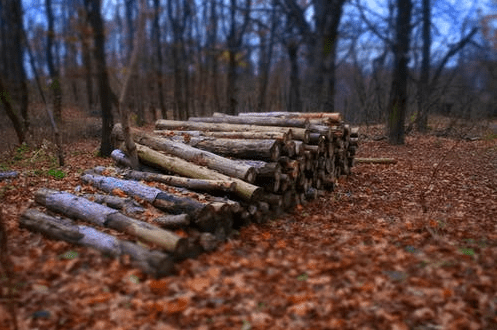For those who have to live with harsh winters or even chilly ones, firewood can be a serious necessity for the whole season. Not only does a crackling fireplace warm up a home or workshop, but it also creates a classic cozy setting that can uplift your spirits on a dark winter’s night.
However, firewood can also be a major fire hazard if you don’t store it properly. Many people who use firewood usually have a stock of it around their place somewhere. That storage pile is useful and saves a lot of hassle–you don’t want to go off into the woods with an ax every time the fire dies out. At the same time, you also don’t want your firewood reserve to get damp or worse, catch fire when it’s not supposed to.
Before you start chopping up your firewood, a guide to splitting mauls might come in handy. Once you have a nice pile of firewood, here are the best ways to store it:
1. Indoor versus Outdoors
In general, it’s not really a good idea to store all your firewood reserves inside of your home. It might be convenient to have all your logs on hand to toss into the fire when it shows signs of dying down. Still, a lot of firewood inside will just put your home at risk.
It’s a much better idea to bring in just the amount of firewood you need for the day and perhaps to start the fire again in the morning. If you want to keep a small reserve inside anyway, put it in a metal trunk or a nearby shed.
The outdoors is a much better location for your firewood, but make sure to choose an area where the wood won’t touch the soil. If it gets into direct contact with the ground, dampness and pest infestations are likely to occur. You want your wood to stay away from moisture, so that it will easily burn when you want a nice roaring fire.
2. Select the Right Location
The location of your outdoor firewood reserve deserves special attention. Not only do you have to keep the wood free of poets and dampness, but it should ideally be at a convenient distance from its place of use. Firewood is quite heavy, so you don’t want the stress of carrying it for long distances.
Of course, you also want to keep the firewood a little away from your home in case of any fire or infestation issues. If the termites attack your firewood, you certainly don’t want to risk them getting into your walls.
If you don’t have a shed or other enclosed area at just the right distance, consider investing in a wheelbarrow. This can make transporting your firewood a lot easier.
3. Ways to Stay Off the Soil
We’ve already mentioned that firewood is not supposed to directly touch the ground or soil. Any surface such as clean gavel, asphalt, or concrete will be a good surface to store your firewood on. If there are no such surfaces around you and you can’t make one just yet, you can also use sticks to elevate the firewood pile. Alternatively, lay a tarp down underneath the firewood.
You can also make a DIY storage area for the firewood using boards from a hardware store. All you have to do is lay down several boards and stack the firewood on top. The firewood should be parallel to the base of boards. Even that slight elevation above the soil should be enough to prevent the dampness from seeping in.
4. Dry out Your Firewood
Before you start stacking up your firewood for the winter, make sure it is completely dry. Keep it outside and let it dry out for at least six months before storing. The cut ends are what you have to consider the most. Make sure to read up on the various types of axes, and then stack the firewood so that even the innermost pieces get some air.
So, how do you know if your firewood is dry enough to store and use at will? There are a few signs for this, including the following:
- dry firewood will have cracks along its edges and some slight cracks as well
- It will also be lighter than freshly cut or collected firewood.
- When you knock two logs against each other, the sound will be hollow
- Logs with any dirt, fungi, or mold on them probably have some moisture inside
- Seasoned wood that’s ready to burn is much easier to spoilt or dent than wood that’s still green
- The bark on dry logs will be loose, so you can easily peel them off. In fact, there might be some bare spots where the bark has flaked off on its own
- Split one of the logs and touch the inside. This should be dry in order to provide effective burning
- Green wood (that’s not dried out yet) won’t be easy to light. It will splitter, smolder, and give out a lot of smoke. A dry piece will be much easier and cleaner to burn, so make sure to test a piece before bringing it into your home.
- If you want to be absolutely sure, purchase or borrow a moisture meter. This is a toll that’s inserted into wood and tells us about its moisture rating. For properly dry wood, the reading should be between 10 percent and 20 percent. Any nearby hardware store or supplier should be able to provide this meter; if not, it should be possible to order one online.
5. Covering the Pile
In addition to laying down a tarp underneath your firewood reserve, it is also important to cover up the pile with a tarp or some other waterproof option. The tarp should be tied or weighed down, though there should be a little air circulation in order to keep the wood from over-drying.
The best way is to cover the firewood stack from the top but leave the sides open.
However, make sure that the tarp or any other kind of cover does not go over the firewood pile before the wood is properly dry. You need to season the wood and then store it safely. If you have just chopped up the firewood or just collected it, don’t put a tarp on just yet.
Of course, the expectation here is if the firewood stack is out of doors and it’s going to rain soon. It’s a good idea to cover up a piece of wet firewood before the rain pours down, as we don’t want it getting any wetter. Again, though, leave the sides open.
6. Effective Stacking
The way you stack your firewood is also instrumental for proper storage. Incorrect stacking can lead to the firewood rotting more easily than otherwise.
It’s always better to stack your firewood instead of just piling it up. Stacking means that each piece of firewood will get proper air circulation so that it doesn’t dry out too much.
Make sure never to stack your firewood against any wall, as this could increase the chances of bacteria and moisture seeping in. There should be at least some inches between the firewood stack and the wall of your shed or other outdoor storage area. Also, don’t make the mistake of stacking the firewood against the wall of your home or any wooden wall. This will only increase the chances of fire or pests spreading quickly to their place.
The stacking pattern you use should have the cut ends of the firewood exposed to the air. This will enable the wood to dry out as quickly as possible. If you’re making the common single-row firewood stack, put the cut ends so that they face the back and front of the stack. You can also look up other stacking methods; some place every layer in one direction in order to enhance air circulation.
Even if you’re short of space, don’t be tempted to pack in the wood very tightly. Loose stacking is essential to prevent rot. In case there is bark on just one side of the wood, stack it so that the bark faces the most vulnerable side, such as against the ground or facing up to withstand snow and rain. A stack with the bark facing up will mean that snow or rain will roll off it most easily.
7. Stable Stacking
Your firewood stack should be as stable as possible, so you don’t want straight and vertical rows. Stack the pieces like a brick wall, with spaces left in between where the mortar would go. Make sure the rows overlap so that the stack doesn’t wobble or tip over easily.
If your stack is too unstable, it mostly collapses when you take some pieces out or if there’s any minor disturbance around it. The fallen pieces are not just a nuisance to pick back up, but they can also hurt your children and pets. Plus, the loose wood is more likely to come into contact with the ground and pick up moisture or bacteria, which it could then spread to the rest of the pile.
Investing in a firewood rack is a very easy and convenient means of storing firewood. You don’t even have to make one; they should be fairly easy to locate in a nearby sore. They’re also quite affordable and come in several sizes and designs. These racks will make it easy to stack our firewood, keep it away from the ground, and stabilize its sides. Since they’re usually open racks, it will be easier to expose the sides of the firewood as well. Finally, a rack will also make it much easier to pull out some firewood when you’re in need of it.
8. Follow All Regulations
Your local area might have its own regulations about firewood storage. Make sure to read up on those and follow them closely. Some areas may not allow any indoor storage for firewood, while others may have regulations about proper stacking. You don’t want to get in any trouble over a pile of firewood, so it’s always safe to do your homework beforehand.
While we’re on the subject of regulation, do read up on the ones regarding your electrical setup as well. You may also want to know about the causes of electrical fires and work on preventing them. .
9. Keep Away From Pets and Children
Your firewood stack should not be near any dog runs or play areas for children. Not only is there a danger of firewood falling down on them, but the wood might contain rodents, snakes, and spiders that can seriously harm kids and small animals.
Even if you stack your firewood properly, children and pets running around near it could lead to the stack toppling over.
10. Keeping the Area Clean
Wood piles are not likely to get much attention, especially when the weather’s still warm. You don’t want to make that mistake, as unattended firewood stacks can get unsightly and infested very soon.
IF the wood dries out too much, it becomes a fire hazard. If any moisture seeps inside, it can ruin the firewood and also create a home for pests. You can avoid these issues by not allowing weeds or grass to grow around the stack, as these will reduce the air circulation. Plus, growing plants will increase the moisture risk and provide cover for creatures like snakes and rodents to make a home. If nothing else, you want to contain such growths in order to keep up the appearance of your yard.
Conclusion
Having some firewood on hand is great if you love a cozy fireplace or might have spontaneous plans to make a fire pit with some friends. As long as you stack and maintain that firewood pile properly, it will be easy to benefit from it when the time comes.






